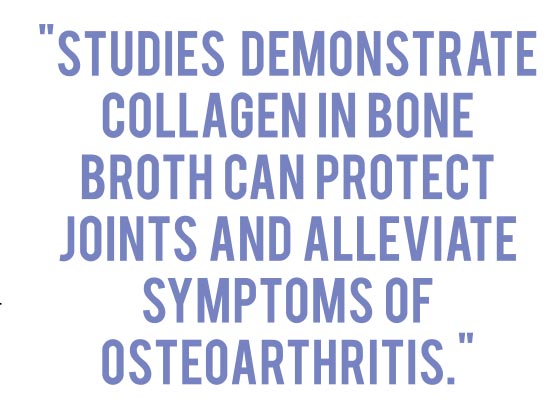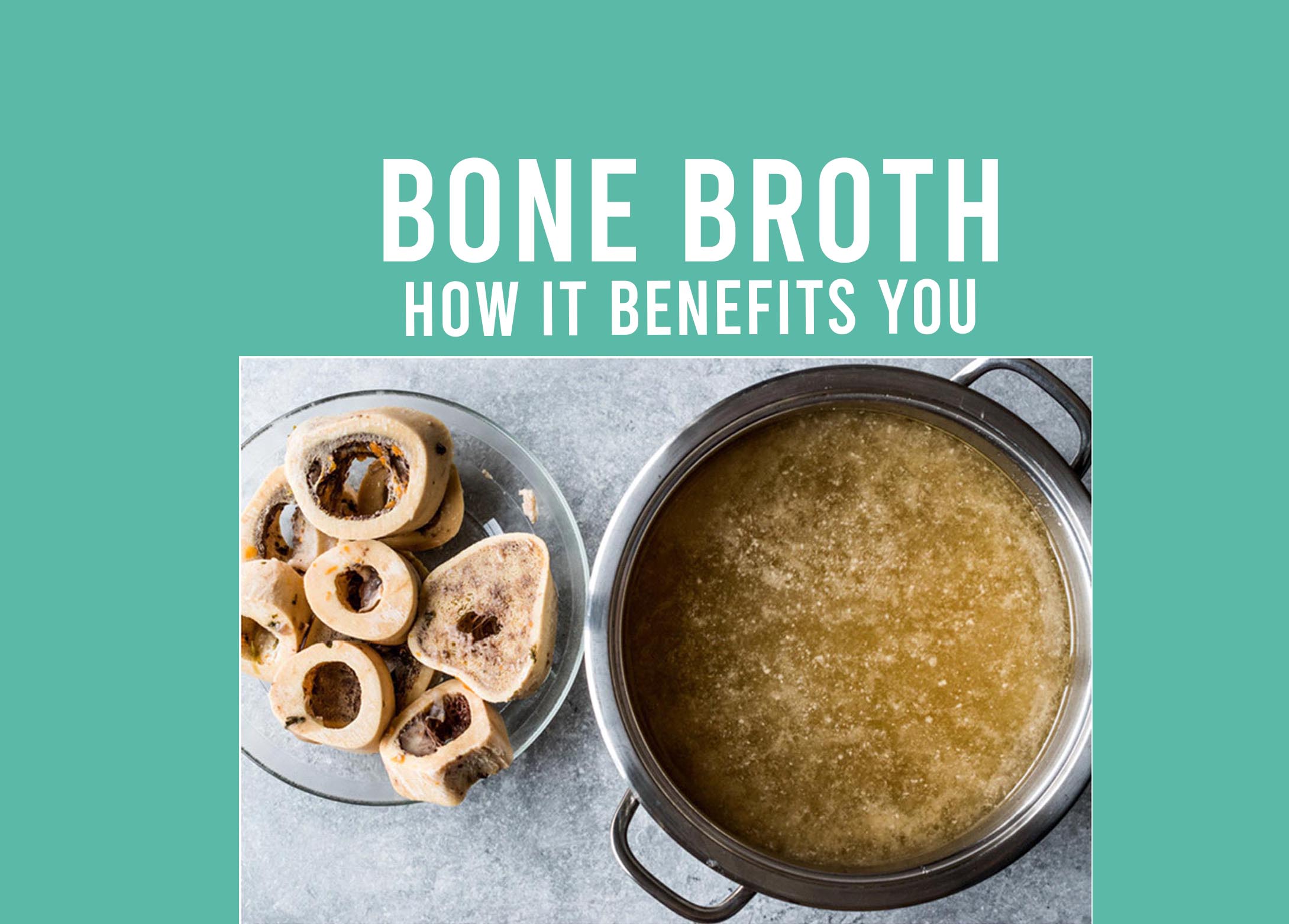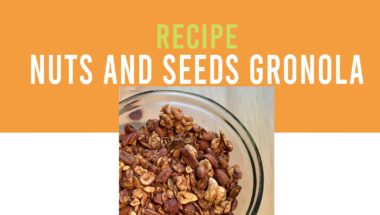Bone broth is a traditional remedy for illness, usually made by simmering chicken, turkey, beef, or lamb bones for several hours. It has received recent media attention for good reason: bone broth provides an abundance of nutrition, including calcium, magnesium, phosphorus, iron, zinc, selenium, Vitamin A, Vitamin K, fatty acids, and collagen. These minerals and nutrients are all beneficial for supporting overall health, but are especially important in the health of bones and joints. A study performed with rabbits found daily dietary supplementation of bone broth to increase bone fracture healing rates.

Collagen—also called “gelatin” because it gelatinizes with cooking—is an important component of bone broth. Studies demonstrate collagen in bone broth can protect joints and alleviate symptoms of osteoarthritis. It is also high in amino acids, including glutamine and glycine. Glutamine helps heal the intestinal lining in cases of leaky gut. Glycine improves digestion by promoting gastric acid secretion, helps increase wound healing, and may improve sleep quality.
Fish bone broth is an alternative to meat and poultry options. In addition to the nutrients mentioned earlier, broth made from fish bones also contains iodine, which helps to improve thyroid health and protect against thyroid cancer. This form of bone broth takes much less time to cook because fish bones are small and delicate. Choose wild-caught fish that are less oily (such as sole, Pacific cod, halibut, rockfish, or tilapia) because the oils may go rancid with cooking.
A caution with bone broth is the potential risk of heavy metal exposure. Heavy metals ingested throughout an animal’s lifetime are stored in its bones and cooking may release these toxins. However, current studies offer conflicting evidence; some show most bone broths contain very little or no heavy metals and tap water as the biggest source of lead contamination. To minimize these concerns, chose bones from organically raised animals without heavy metals in their environments and boil in clean, filtered water.
Including joints in your both broth will increase the amount of collagen-containing cartilage and a bit of apple cider vinegar will help extract the nutrients (amount will vary depending broth volume and bone toughness). A variety of vegetables and herbs can be added to further increase nutrient content and enhance flavour. Bone broth leftovers can be frozen for later use.
References:
Aljumaily, M.A. (2011). The effect of concentrated bone broth as a dietary supplementation on bone healing in rabbits. Annals of the College of Medicine Mosul, 37(1,2), 42-47.
Baxter, M.J., et al. (1992). Lead contamination during domestic preparation and cooking of potatoes and leacing of bone-derived lead on roasting, marinading, and boiling beef. Food Additives and Contamination, 9(3), 225-235.
Daniel, K. (2013). Bone broth and lead contamination: A very flawed study in Medical Hypotheses. The Weston A. Price Foundation. Retrieved from https://www.westonaprice.org/health-topics/bone-broth-and-lead-contamination-a-very-flawed-study-in-medical-hypotheses/
Daniel, K. (2003). Why bone broth is beautiful: Essential roles for proline, glycine, and gelatin. The Weston A. Price Foundation. Retrieved from https://www.westonaprice.org/health-topics/why-broth-is-beautiful-essential-roles-for-proline-glycine-and-gelatin/
Hsu, D., et al. (2017). Essential and toxic metals in animal bone broths. Food and Nutrition, 61(1), 1347478. Retrieved from https://www.ncbi.nlm.nih.gov/pmc/articles/PMC5533136/.
Johnson, J. (2018). What are the benefits of bone broth? Medical News Today. Retrieved from https://www.medicalnewstoday.com/articles/323903.php.
Monro, J.A., et al. (2013). The risk of lead contamination in bone broth diets. Medical Hypotheses, 80(4), 389-390.
Petrucci, K. (2015). Fish bone broth. Dr. Kellyann. Retrieved from https://www.drkellyann.com/recipe/fish-bone-broth/
Siebecker, A. (2005). Traditional Bone Broth in Modern Health and Disease. Townsend Letter: The Examiner of Alternative Medicine. Retrieved from http://www.townsendletter.com/FebMarch2005/broth0205.htm.




